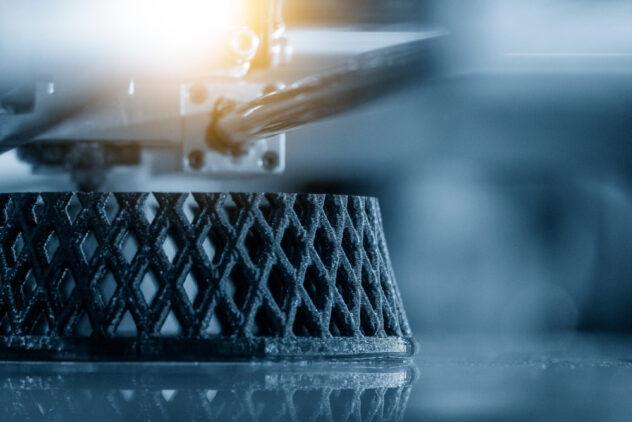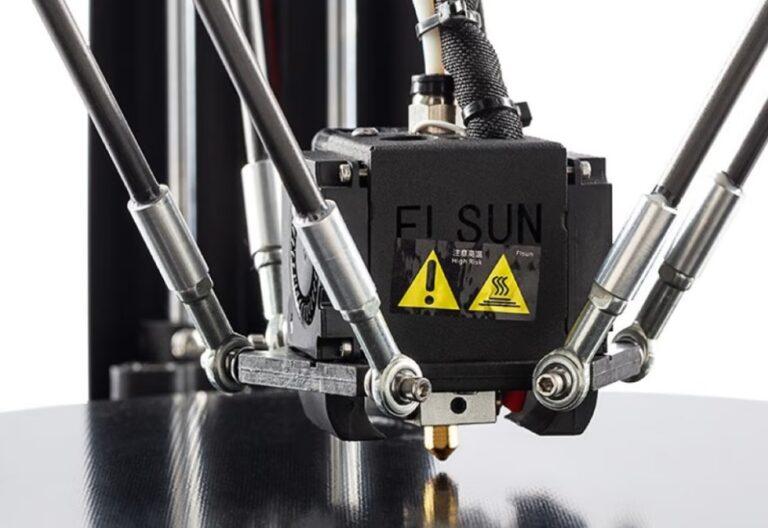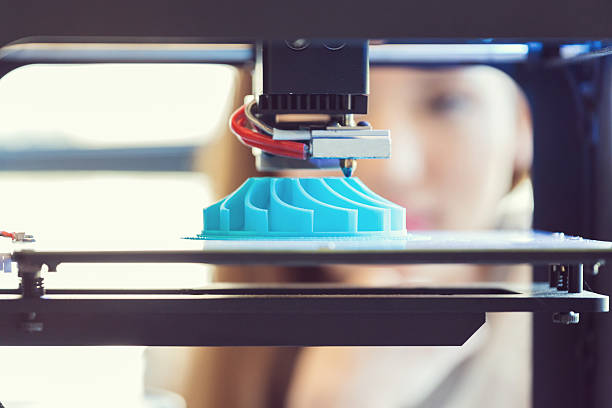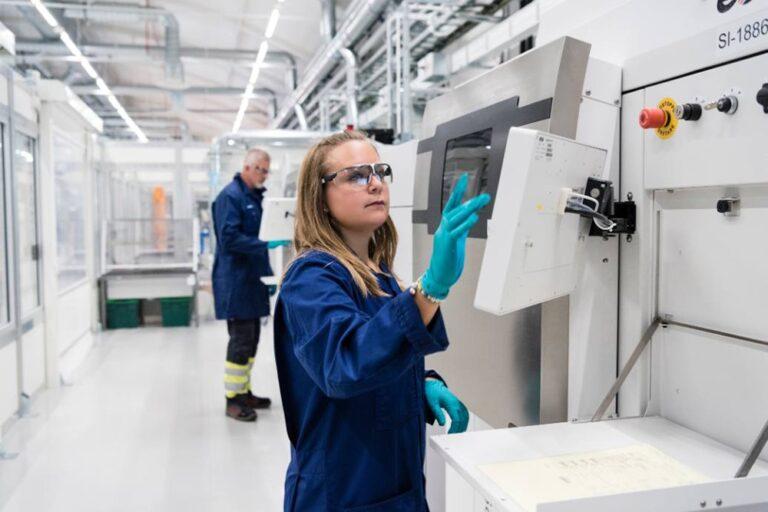Starting a 3D Printing Business: Tips and Tricks for Success
Introduction
The creation, design, and production of goods have all been changed by the quickly expanding 3D printing market. A variety of industries, from aerospace engineering to fashion design, are using 3D printing to develop new products and solutions. For business owners wishing to get into a burgeoning sector, starting a 3D printing business can be a rewarding opportunity.
For those who are new to the sector, however, beginning a 3D printing firm might be challenging. Market research is essential. Choose the best 3D printer and materials. Build a strong team. Form alliances and partnerships. Provide top-notch customer service. This article offers tips for starting a profitable 3D printing business. It’s designed to assist ambitious entrepreneurs in the 3D printing industry.
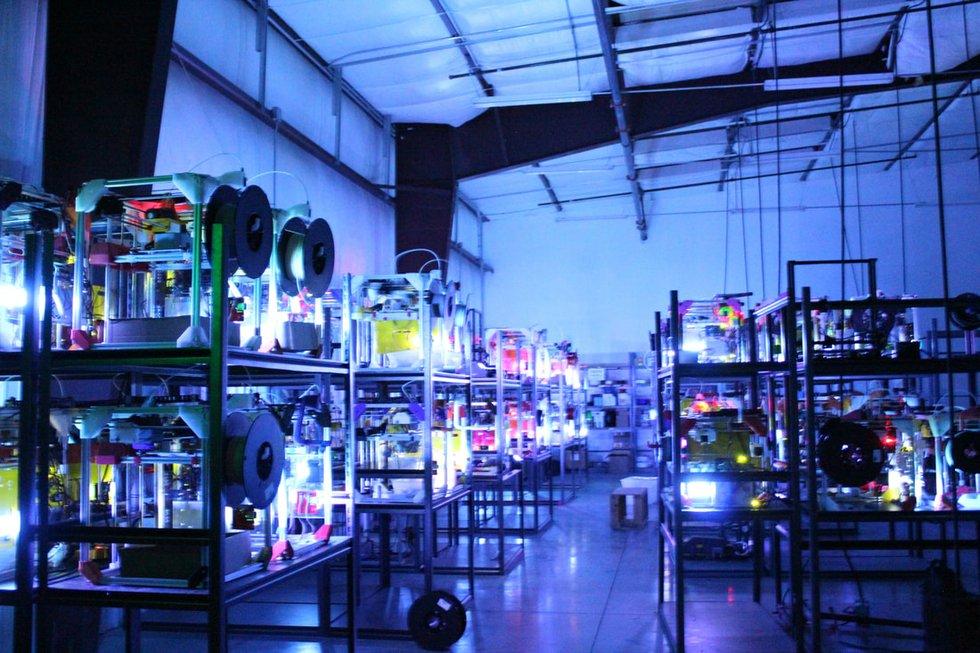
This article provides essential tips for succeeding in the 3D printing industry. Whether you want a small local business or a multinational corporation, we cover it all. Learn how to conduct market research and create a marketing plan to launch your 3D printing business. So let’s plunge in and discover the 3D printing business world!
Explanation of the growing 3D printing industry
The 3D printing sector is rapidly expanding, attracting entrepreneurs seeking creativity and innovation. It produces a wide variety of goods, from jewelry and furniture to prosthetic limbs and medical implants. Companies are turning to 3D printing to reduce their environmental impact and avoid waste. The demand for 3D printing services is growing as people seek unique, cutting-edge products. This makes it an exciting and profitable industry for business owners to enter.
Importance of starting a 3D Printing Business in a growing industry
Entrepreneurs can benefit from a number of advantages by starting a 3D printing business in a developing industry. Starting a business in 3D printing means tapping into a strong market with innovation potential. The industry is constantly expanding, offering new chances for adaptable companies. 3D printing technology is developing, leading to even more opportunities. Starting a 3D printing business means leading a new manufacturing period. This can influence how goods are designed, produced, and disseminated in the future.
Purpose of the article: to provide tips and tricks for starting a successful 3D printing business
The objective of this essay is to give budding entrepreneurs tips and tactics for building a successful 3D printing firm. Now is the ideal time to launch a 3D printing business due to the industry’s rapid growth. Starting a 3D printing company can be difficult, with considerations ranging from market research to customer service. This guide is for starting a 3D printing business. It covers everything from printers to partnerships. It will help both newcomers and those expanding. Get the knowledge and insights to thrive in the industry.
Conducting Market Research
The first step in beginning a 3D printing firm is to conduct market research. Before starting a business, understand the market size, audience, and competition. Identify your target market and their requirements and preferences. Determine how your company can best serve them. Researching the competition is also essential. Find ways to set your company apart from the competition. Examine its advantages and disadvantages. Develop a powerful marketing plan. Decide on the best course for your company. Make sure your 3D printing business is in a strong position for success. Complete thorough market research. Become a successful entrepreneur.
Identifying target customers and their needs
A key component of launching a successful 3D printing business is determining potential consumers’ demands. Focus on your target audience after conducting market research and understanding the competition. Determine their needs, dislikes, and pain points. Figure out how your 3D printing services can help them. Consider designing specialized products like prostheses or surgical instruments, for instance, if the medical sector is your target market. Making smart choices is key. Choose the right 3D printer. Consider the materials. Evaluate software options. These choices can help you. Offer the best solutions. Meet your customers’ needs.
This is accomplished by first understanding the demands and preferences of your target audience. Build a successful company by focusing on your target customers’ needs. Concentrate on your clients to draw in a following and increase your chances of success. By meeting the demands of your target market, you can build a loyal customer base. Understanding your customers’ needs is essential for the growth and success of your business.
Analyzing the competition and their offerings
Starting a 3D printing firm requires careful consideration of the competition and its products. Knowing your competition can help you spot market gaps and set your company apart. Consider your competition’s advantages, disadvantages, pricing, products, and promotions. Use this information to create a unique value proposition and stand out. If your competition offers low prices, offer high-end goods or specialized services. Learn from their successes and failures, and create plans to strengthen your company. Thorough research on your competitors will help you make decisions and improve your chances of success.
Understanding the market trends and opportunities
For a successful 3D printing firm to get off the ground, it is essential to comprehend market trends and prospects. To keep up with the 3D printing industry growth, stay updated on trends and advances. Track technological developments, novel materials, and emerging markets. Explore 3D printing applications in various industries, like fashion, auto, and aerospace. Identify market opportunities and stay ahead of the competition. Analyze market trends to position your company to benefit from new advancements.
Creating a Business Plan
A vital step in launching a profitable 3D printing business is creating a business strategy. A business plan is a road map for the company. It defines the objectives, plans, and methods. The plan should have an executive overview. Market analysis is also important. Product and service descriptions must be included. Marketing and sales strategy should be discussed. Financial predictions must be made. A thorough action plan for goals should be present.
A business plan makes entrepreneurs reflect critically on their enterprise and take reasoned decisions.
It has many advantages, one of which is aiding in obtaining finance from lenders or investors.
When a business plan shows a thorough understanding of the market and the road to success. A business plan can also be used as a tool for tracking the development and making required adjustments.
When developing a business plan for a 3D printing enterprise, consider:
- the price of 3D printers and materials
- the pricing strategy
- the target market
Explain how the company will set itself apart from rivals and develop a distinctive value proposition. A well-written business plan can help 3D printing business owners. It assists in overcoming obstacles and laying the groundwork for success. A long-term perspective is crucial for launching a successful 3D printing business.
Defining the company’s vision and mission statement
Defining the company’s vision and mission statement is an important step in starting a 3D printing business. The vision statement describes long-term goals. The mission statement defines purpose and values. Both are important for the business. Be clear in defining them. The vision statement should be ambitious and inspiring, reflecting the entrepreneur’s vision for the future of the business. For example, a 3D printing business that specializes in medical devices may have a vision statement that reads, “To revolutionize the healthcare industry by providing innovative, life-saving 3D printed products.”
The mission statement should be more focused and specific, outlining how the company will achieve its vision. It should also reflect the values and principles that guide the business. For example, a 3D printing business focused on sustainability may have a mission statement that reads, “To create sustainable, environmentally-friendly 3D printed products that improve people’s lives”. “Defining a clear vision and mission statement can help guide the decision-making process and ensure that the business is aligned with its goals and values. It can also help communicate the purpose of the business to customers and investors, building a strong brand identity and establishing trust.
Outlining the business model and revenue streams
Outlining the business model and revenue streams is a critical aspect of starting a 3D printing business. The business model should describe how the company will generate revenue and create value for customers. A 3D printing business can use different models. A service bureau model can be applied. A product-based model is also an option. A hybrid of both models is also possible.
In a service bureau model, the 3D printing business provides printing services to customers on a fee-for-service basis. Customers may upload their designs online, or work with the company’s design team to create custom products. This model can be particularly effective for businesses that specialize in high-end or complex 3D printing services.
The 3D printing business sells its own products. These products include jewelry, home decor, and accessories. It operates on a product-based model. The company designs these products. This model can be effective for businesses that have a strong brand identity and a unique product offering.
A hybrid model combines aspects of both the service bureau and product-based models. For example, a 3D printing business may offer both printing services and a line of proprietary 3D printed products.
Consider pricing, production costs, and sales tactics when outlining your business model. The goal should be to create a sustainable and profitable business. Your business should meet the needs of customers and deliver value to stakeholders.
Identifying startup costs and potential funding sources
Starting a 3D printing firm requires determining initial expenses and prospective funding sources. Startup costs for a 3D printing firm vary based on type, size, and equipment needed. Materials needed also affect startup costs. Consider these factors carefully when planning a 3D printing business. A 3D printing firm may include 3D printers, software, materials, rent, utilities, personnel, and other startup expenditures.
Once entrepreneurs determine startup expenditures, they should think about prospective funding sources. One alternative is to self-finance the firm using personal resources or loans from family and friends. Another choice is to look for outside finance, like from angel or venture capitalists.
For a 3D printing firm, crowdfunding websites can be a helpful tool for raising capital. Entrepreneurs can display their goods or services and raise money from a broad audience of potential clients on websites like Kickstarter and Indiegogo. Backers may gain early product access or additional benefits in exchange.
Traditional financing methods like bank loans or loans from the Small Business Administration may be viable for companies looking for greater sums of money. To make sure that they support the objectives and guiding principles of the company, it is crucial to thoroughly investigate and assess potential funding sources.
Developing a marketing strategy and sales plan
Developing a marketing strategy and sales plan is a crucial aspect of starting a 3D printing business. A well-crafted marketing strategy can help a business to effectively communicate its value proposition to potential customers, differentiate itself from competitors, and generate leads and sales.
One key element of a marketing strategy is identifying the target customer and understanding their needs and preferences. Businesses can develop targeted messaging and promotional materials that speak directly to the interests and pain points of the target customer once they identify them.
Another important aspect of a marketing strategy is selecting the right channels to reach potential customers. For example, a business that caters to tech-savvy consumers may benefit from a strong social media presence, while a business that serves industrial clients may focus on trade shows and industry publications.
Once businesses develop their marketing strategy, they should create a sales plan to guide their efforts in converting leads into customers. This may include developing a sales funnel, identifying key performance indicators, and training sales staff on effective selling techniques.
In addition to traditional marketing and sales tactics, businesses may also consider leveraging emerging technologies such as augmented reality or virtual reality to showcase their products in a more immersive and interactive way.
Overall, a strong marketing strategy and sales plan can help a 3D printing business to effectively reach and convert potential customers, ultimately driving growth and success.
Choosing the Right 3D Printer and Materials
Choosing the right 3D printer and materials is a critical decision for any 3D printing business. The specific needs of the business, such as the type of products or services being offered, the required level of precision and detail, and the desired production volume, will determine the right printer and materials.
One key factor to consider when selecting a 3D printer is the printing technology. Common 3D printing technologies include fused deposition modeling (FDM), stereolithography (SLA), and selective laser sintering (SLS). Each technology has its own advantages and limitations, so it’s important to choose the one that best fits the needs of the business.
Another important consideration is the type of materials that will be used. The most common materials used in 3D printing include plastics, metals, and resins. Each material possesses unique properties and serves different applications. For instance, rapid prototyping and low-volume production frequently employ plastics, while high-volume manufacturing and end-use products rely on metals.
When selecting a 3D printer and materials, it’s also important to consider factors such as cost, maintenance requirements, and the level of technical expertise required to operate the equipment. Choosing the right equipment and materials can help ensure that a 3D printing business is able to produce high-quality products efficiently and cost-effectively.
Overall, careful consideration of 3D printer and material options is critical for any 3D printing business looking to succeed in this rapidly growing industry.
Factors to consider when selecting a 3D printer
Businesses should take into account a number of variables when choosing a 3D printer to make sure they get the machine that best suits their requirements.
The printing technology employed by the printer is among the most crucial elements to take into account. Resolution, speed, and material compatibility are just a few of the benefits and drawbacks of various 3D printing technologies. For instance, Stereolithography (SLA) printers offer higher resolution and are more suited for generating detailed, intricate parts than Fused Deposition Modeling (FDM) printers, which are noted for their cost and ease of use.
The printer’s size and capacity are additional crucial factors to take into account. Particularly if the company intends to produce large or complex parts, the size of the build platform and the largest part that can be printed are significant considerations. Similar to this, when choosing a 3D printer, printing speed and accuracy are crucial elements to take into account because they will influence production timeframes and the quality of the finished product.
The price of the printer and recurring expenses for consumables like filaments or resins are other elements to take into account. Other crucial factors to take into account are the printer’s maintenance needs, technical assistance, and level of operating competence.
When choosing a 3D printer, organizations should ultimately take into account their unique requirements and objectives. A 3D printing business may generate high-quality products quickly and affordably with the help of the appropriate printer.
Types of materials used in 3D printing
3D printing technology has made significant strides in recent years, and with that progress has come an explosion in the number of materials that can be used for 3D printing. Here are some of the most common types of materials used in 3D printing:
- Plastics: Plastics are the most common type of material used in 3D printing. They are affordable, and versatile, and come in a wide variety of types, including ABS, PLA, PET, and nylon. Plastics are often used in low-cost prototyping and small-scale production.
- Metals: Metals are increasingly being used for 3D printing, thanks to their strength, durability, and ability to produce complex shapes. Some of the most commonly used metals include stainless steel, titanium, and aluminum.
- Resins: Resins are a popular material for high-resolution 3D printing, such as in the dental and jewelry industries. Resins are typically cured using light or heat and are known for their ability to produce highly detailed and intricate designs.
- Ceramics: Ceramics are another material that is gaining popularity in 3D printing, especially for applications like dental implants and bone replacements. Ceramic printing requires specialized equipment and processes, but the results can be highly precise and durable.
- Composites: Composites are made up of two or more materials combined together, such as carbon fiber and nylon. Composites can offer unique properties, such as strength and flexibility, and are used in applications like aerospace and automotive manufacturing.
Overall, the wide range of materials available for 3D printing allows businesses to produce a diverse array of products, from low-cost prototypes to high-end, custom-made components. Careful consideration of the material properties and their suitability for specific applications is critical for businesses looking to succeed in the 3D printing industry.
Identifying the optimal combination of printer and materials for the business’s needs
When it comes to 3D printing, selecting the right printer and materials is crucial to the success of any business. Businesses need to consider several factors when choosing the optimal combination of printer and materials for their needs. Here are some key considerations:
- Object requirements: The first step in selecting a printer and materials is to determine the specific requirements of the object being printed. For example, if the object needs to be flexible, a printer that can handle flexible materials like TPU or rubber-like materials would be necessary.
- Budget: The cost of printers and materials varies widely, so businesses need to consider their budget when making a decision. While more expensive printers may offer better quality and more capabilities, they may not be necessary for all applications.
- Production volume: Businesses need to consider their production volume when selecting a printer and materials. If they plan to produce a large number of parts, they may need a printer that can handle high-volume production and materials that are cost-effective for mass production.
- Material properties: Different materials offer different properties, such as strength, flexibility, and durability. Businesses need to consider the material properties required for their products and choose the materials that will best meet those requirements.
- Printer capabilities: Different printers offer different capabilities, such as print speed, accuracy, and build volume. Businesses need to select a printer that can meet their specific requirements.
Overall, selecting the optimal combination of printer and materials requires careful consideration of several factors. By selecting the right combination, businesses can produce high-quality products efficiently and cost-effectively, ultimately leading to greater success in the 3D printing industry.
Building a Strong Team
Any business, including a 3D printing business, must have a solid team in order to succeed. A strong team can contribute to ensuring that the company operates effectively and that all projects are finished to the highest standards. While assembling a capable team for a 3D printing business, keep in mind the following:
Determine important roles
Identifying the key roles required for the company is the first step in creating a successful team. They might include 3D printing specialists, designers, sales and marketing experts, and office employees.
Building a successful team for a 3D printing firm requires identifying critical roles. To make sure that the company has the appropriate knowledge and experience to achieve its objectives, each function within the team should be carefully assessed. Important positions could include 3D printing technicians who can run and maintain the printers, designers who can produce 3D models, sales and marketing experts who can advertise the company and its services, and administrative employees who can oversee the day-to-day operations of the company. Business owners may make sure they hire the right people with the essential abilities and expertise to support the success of the company by identifying the main positions required for the organization.
Employ the right people
After the major positions have been determined, it is crucial to fill each position with the appropriate candidates. This entails seeking applicants who possess the required training, expertise, love for 3D printing, and openness to learning and development.
A solid team for a 3D printing business must be assembled by hiring the proper individuals. Company owners should seek applicants that are passionate about 3D printing, have the appropriate training and expertise to carry out the essential responsibilities and are eager to learn and develop. It’s crucial to carefully screen candidates during the recruiting process to make sure they possess the skills and character attributes required for the position. This could entail conducting interviews, looking over resumes and portfolios, and checking references. The proper hires not only guarantee that the company has the essential knowledge and abilities, but also promote the development of a supportive workplace culture.
Promote a positive workplace culture
A strong team requires a positive workplace culture. This entails developing a culture that values and supports workers and promotes open and honest communication.
A strong team and a prosperous 3D printing firm require fostering a pleasant working culture. Top talent may be attracted and retained with the support of a positive workplace culture, which can also increase employee morale and productivity. By promoting open communication, developing teamwork, and praising and rewarding staff for their efforts, business owners may help create a positive workplace culture. They can also foster a positive work atmosphere by promoting work-life balance and providing opportunities for professional progress. Business owners may build a staff that is engaged, driven, and dedicated to the success of the company by encouraging a positive workplace culture.
Offer training and development opportunities
To build a successful team, it’s crucial to provide training and development opportunities to help employees grow and develop their talents. Training could entail classes, workshops, or on-the-job training.
In order to build a great workforce in a 3D printing business, it’s crucial to provide possibilities for training and development. Employees can get new skills and stay current on the most recent developments in 3D printing technology with the aid of training and development programs. This may contribute to raising both the standard of the work done and the effectiveness of the company. Additionally, offering training and development opportunities can help to raise employee morale and job satisfaction and may even aid in long-term employee retention. Through internal training programs, industry events, and online courses, business owners can provide possibilities for training and development. Business owners can create a workforce that is knowledgeable, competent, and driven to succeed by investing in the development of their employees.
Encourage collaboration
In order to create a successful team in a 3D printing business, collaboration is essential. Collaboration and idea-sharing among employees can boost creativity and productivity.
For a 3D printing business to develop a great team, encouraging collaboration is crucial. Employees can share ideas and expertise through collaboration, which improves problem-solving and decision-making. Collaboration can help team members communicate better, which can prevent misunderstandings and foster a supportive workplace environment. Company owners can promote teamwork by giving employees the chance to collaborate on projects, arranging brainstorming sessions, and promoting an open-door policy where employees feel free to approach one another with inquiries or suggestions. Business leaders can create a team that is extremely proficient at working together toward a common objective by encouraging collaboration.
Developing a company culture and values
Building a successful 3D printing firm requires creating a solid corporate culture and set of principles. Employee interactions with coworkers, customers, and stakeholders are governed by the company culture, which is the set of shared values, beliefs, and attitudes that characterize the workplace. A great culture may boost staff morale and productivity, increase customer happiness, and ultimately help the company succeed. By clearly defining the company’s vision and values, conveying them to employees, and demonstrating them in their own behavior, business owners can create a strong company culture. Additionally, they can give workers the chance to provide feedback and make suggestions while also including them in the process of establishing the company’s culture and values. Business owners may create a team that is devoted to the success of their organization by creating a strong company culture and set of core values.
The success of a 3D printing business depends, in general, on developing a solid team. Businesses may create a team that is enthusiastic, knowledgeable, and dedicated to the company’s success by selecting the proper employees, developing a great workplace culture, offering chances for training and growth, and promoting collaboration.
Establishing Partnerships and Collaborations
An efficient method of expanding a 3D printing firm is to form alliances and partnerships. Partnerships can assist firms in expanding their offerings, reaching new markets, and utilizing the knowledge of other organizations. When selecting partners, it’s critical to look for companies with complementary strengths and similar beliefs. Working together with other companies can be advantageous since it can result in the creation of new goods or services and the exposure of the company to new customers.
Company owners should think about collaborating with companies in related industries as well as those that are complementary to their own. In order to bring new perspectives and ideas to the table, they should also be open to working with people and groups outside of their business. In the end, forming partnerships and working together can help businesses reach their objectives more quickly and effectively, which can help them succeed in the long run.
Forming partnerships with complementary businesses
3D printing firm owners can benefit from forming alliances with companies that complement their own. Businesses that provide goods or services that are related to the 3D printing business but do not directly compete with it are said to be complementary businesses. The 3D printing business can broaden its product line and attract new clients by developing alliances with similar industries. To provide full-service product development, for instance, a 3D printing business that specialized in producing prototypes could collaborate with a design firm.
The 3D printing business may gain an advantage over rivals that only provide one of these services by attracting clients who require both design and manufacturing services. When developing partnerships with complementary firms, it’s critical to look for companies that have a solid reputation and comparable ideals. Company owners should also set expectations for how the partnership will function and provide clear routes of communication. 3D printing enterprises can develop a more robust and competitive product by building strong alliances with complementary industries, which can help them win customers and grow their company.
Collaborating with designers and engineers
For 3D printing business owners, collaborating with designers and engineers can be a worthwhile strategy. The 3D printing firm may produce high-end and cutting-edge products with the aid of these experts’ particular knowledge and abilities. Designers and engineers may collaborate to make sure that the 3D printing business produces things that are both technically and commercially viable. In order to stay current with the most recent developments and trends in the industry, the 3D printing firm can benefit from working with designers and engineers.
The 3D printing business must set up clear communication channels and project expectations before working with designers and engineers. This can help to prevent misconceptions and make sure the project is finished on schedule and within budget. 3D printing business owners may produce goods that are both useful and aesthetically beautiful by establishing strong connections with designers and engineers, which can help them stand out in the market.
Building a strong network of industry contacts
Growing and succeeding 3D printing company can be achieved by developing a strong network of business contacts. Businesses can learn about new technology, materials, and processes that can enable them to better their goods and services by interacting with others in the sector. They can also locate fresh distributors, suppliers, and clients. Businesses can participate in online forums and groups, trade fairs, industry associations, and trade exhibits to expand their network of industry contacts. They can also get in touch with other companies and industry experts to build contacts and look into possible collaborations. A 3D printing business may keep ahead of the competition and set itself up for long-term success by developing a strong network of industry contacts.
Providing Excellent Customer Service
For any business, but especially for 3D printing firms, offering top-notch customer service is crucial. Positive customer experiences increase the likelihood that they will patronize the company again and refer their friends, which promotes growth and success. Businesses should make an effort to comprehend their customers’ wants and preferences, communicate effectively and openly, and give prompt, individualized support if they want to deliver exceptional customer service. This can include giving detailed product information, offering swift and reliable shipping, and offering flexible return and exchange policies. Businesses can also go above and beyond to satisfy their clients, such as by supplying free samples or individualized solutions. 3D printing business owners may forge enduring relationships with their clients and establish a solid reputation in the marketplace by placing a high priority on customer service.
Understanding customer needs and expectations
To provide exceptional customer service, 3D printing businesses must first understand their customers’ needs and expectations. This includes identifying the specific industries, niches, or markets that the business is targeting and the unique requirements of each customer segment. For example, medical device manufacturers may have different needs than architecture firms, and jewelry designers may require different materials and finishes than industrial manufacturers.
Additionally, businesses should take the time to understand their customer’s pain points and challenges. This can involve conducting surveys or focus groups, analyzing customer feedback, and staying up-to-date on industry trends and developments. By understanding these needs and expectations, businesses can tailor their products, services, and support to best meet their customers’ requirements.
Effective communication is also critical to understanding customer needs and expectations. 3D printing businesses should be transparent about their products, pricing, and delivery times, and respond quickly and clearly to customer inquiries or concerns. This can help build trust and establish a positive reputation among customers.
Ultimately, understanding customer needs and expectations is a continuous process that requires ongoing research, analysis, and communication. By prioritizing customer needs and providing exceptional service, 3D printing businesses can establish a loyal customer base and position themselves for long-term success.
Developing processes for delivering quality products and services
Any 3D printing business that wants to prosper must establish procedures for providing high-quality goods and services. This entails putting in place a stringent quality control system to guarantee the uniformity and correctness of all 3D prints. The procedure should involve calibrating and testing the 3D printers as well as employing premium materials that are appropriate for the customer’s requirements. A clear and effective workflow that enables on-time order delivery is also crucial. Streamline production and cut down on errors, this may entail developing standard operating procedures and automating processes where appropriate.
To guarantee that consumers’ wants and expectations are met, it is also crucial to create clear communication channels with them. Responding quickly to questions and informing clients of the progress of their orders are also necessary components of this. Building trust and maintaining strong connections with clients can be aided by regular progress reports and updates on any problems that may emerge. In order to understand how customers feel about the company and pinpoint areas for improvement, it is also crucial to ask for feedback from them.
In the end, offering top-notch customer service necessitates dedication to providing high-quality goods and services, being accessible and open with clients, and consistently enhancing procedures to assure client happiness. A 3D printing business can develop a devoted customer base and earn a good reputation in the market by giving customer requirements and expectations first priority.
Building customer loyalty through exceptional service
All businesses, including 3D printing firms, must cultivate customer loyalty in order to succeed. One of the best methods to develop a devoted customer base is to offer great customer service. This entails going above and beyond to meet and exceed client expectations, such as by offering individualized service and assistance, swiftly answering inquiries, and rapidly and effectively resolving any problems or issues.
Offering more value in addition to the first purchase is one strategy to increase client loyalty. This may entail offering continuous care and upkeep, providing options for modification, or granting access to restricted materials or content. Incorporating consumer input into the company’s offers and operations is another crucial step.
Building great relationships with consumers is another crucial component of increasing customer loyalty. This entails identifying solutions that address their particular demands by first understanding their requirements, preferences, and difficulties. This can be done through consistent contact, such as email newsletters or social media updates, as well as through face-to-face interactions at gatherings or trade exhibits.
Ultimately, developing client loyalty demands a dedication to offering outstanding service and building solid relationships with customers. A 3D printing business can do this to build a foundation of devoted clients who will not only do business with them again in the future but also refer them to others.
Conclusion
In conclusion, establishing a profitable 3D printing firm necessitates thorough preparation, research, and a dedication to offering top-notch goods and services. It’s critical to identify the target audience, comprehend their requirements and expectations, and set the company apart from the competitors. It is critical to developing a solid business plan with market analysis, a marketing strategy, and a financial forecast. The success of the company can also be influenced by selecting the best 3D printer and materials, assembling a solid staff, and establishing partnerships and collaborations. Last but not least, securing the long-term success and sustainability of the organization requires providing top-notch customer service and cultivating client loyalty. A 3D printing business may be profitable and fulfilling with the correct mindset and commitment.
Recap of tips and tricks for starting a successful 3D printing business
- Conduct thorough market research and identify the target customers and their needs.
- Analyze the competition and understand the market trends and opportunities.
- Create a solid business plan that outlines the vision, mission, business model, and revenue streams.
- Identify the startup costs and potential funding sources.
- Develop a marketing strategy and sales plan to reach potential customers.
- Choose the right 3D printer and materials for the business’s needs.
- Build a strong team by defining important roles, hiring the right people, promoting a positive workplace culture, and offering training and development opportunities.
- Form partnerships and collaborations with complementary businesses, designers, and engineers to expand the business’s reach and capabilities.
- Focus on providing excellent customer service by understanding customer needs and expectations, developing processes for delivering quality products and services, and building customer loyalty through exceptional service.
By following these tips and tricks, entrepreneurs can increase their chances of starting a successful 3D printing business and thriving in the growing industry.
Final thoughts on the importance of the 3D printing industry
Over time, the 3D printing sector has swiftly developed and expanded, transforming the processes of product conception, prototyping, and production. The potential for growth and success in this business is substantial because of the rising demand for customized goods and the creation of new materials and technologies. Although it might be difficult and complicated to launch a 3D printing firm, it can also be a fulfilling and successful endeavor with the correct plans, resources, and personnel in place. Businesses may remain competitive and inventive in this fast-paced sector by keeping up with the newest trends, technologies, and client needs. In the end, the 3D printing market offers a multitude of chances for business owners and entrepreneurs to influence the direction of manufacturing and design and have a beneficial influence on a variety of sectors, including aerospace and healthcare.
Call to action for readers to start their own 3D printing business
It’s time to act if you’ve been thinking about launching your own 3D printing business. You may build a successful company in this expanding sector with the correct planning, market research, and preparation. Make use of the advice provided in this article as a starting point. Keep in mind to prioritize the wants and expectations of your consumers while remaining focused on your vision and goal. Don’t be hesitant to look for joint ventures and other forms of collaboration, and never stop looking for fresh chances for development and innovation. You can transform your love for 3D printing into a successful business with perseverance and hard work.


